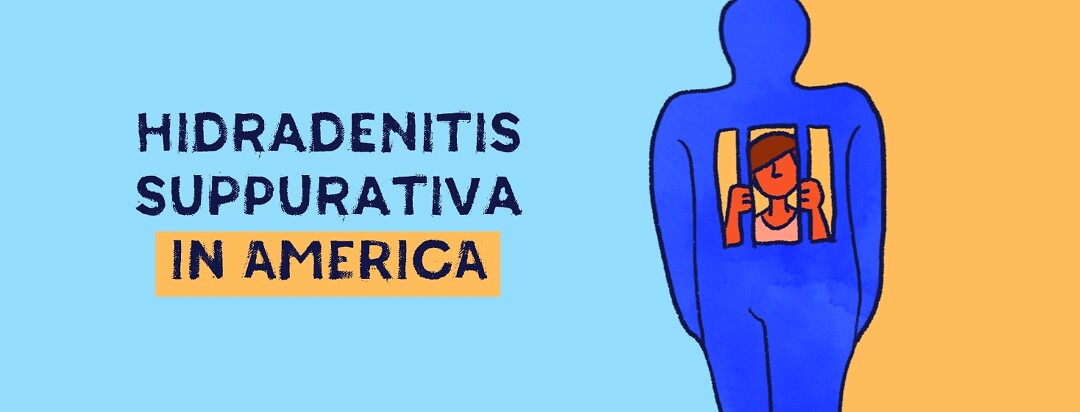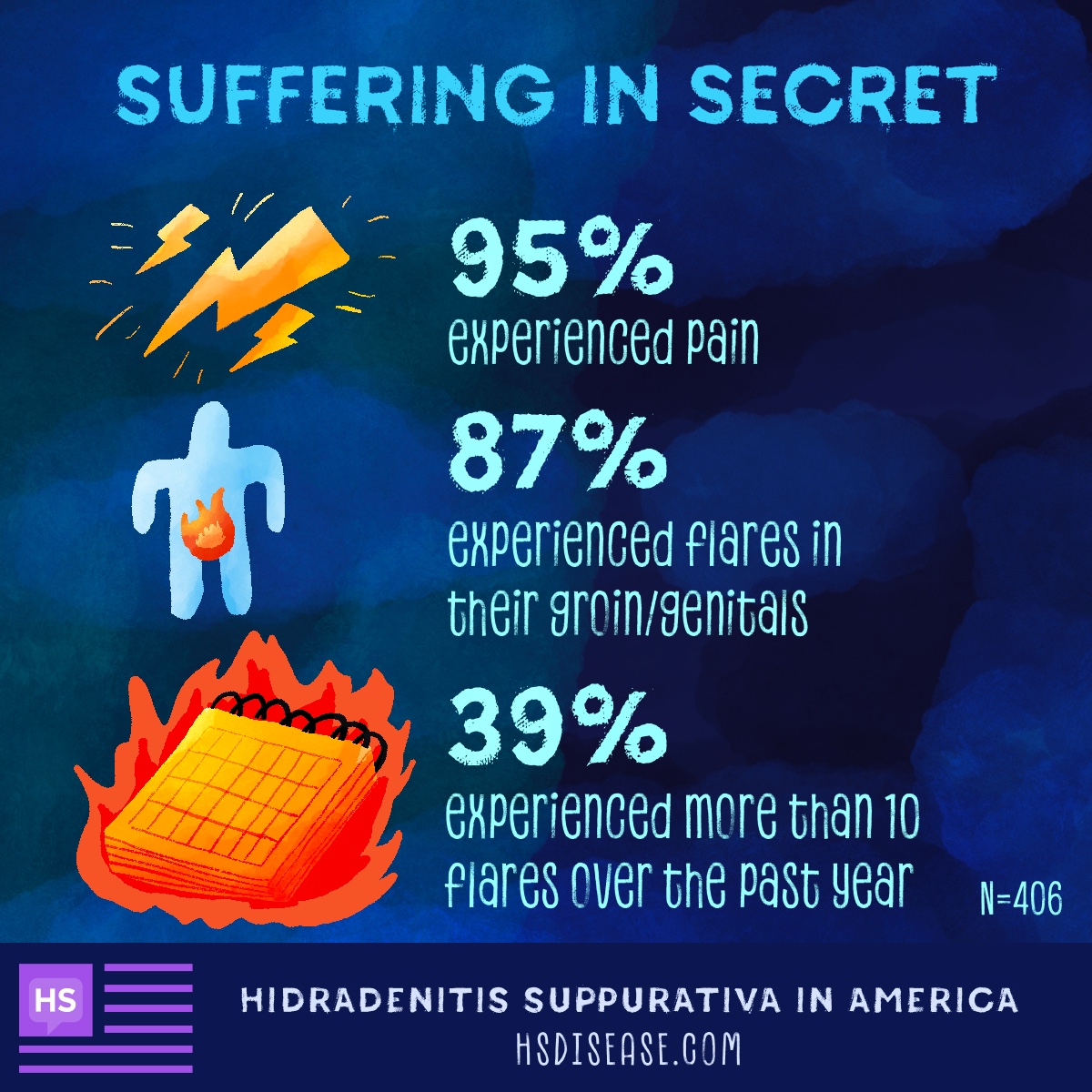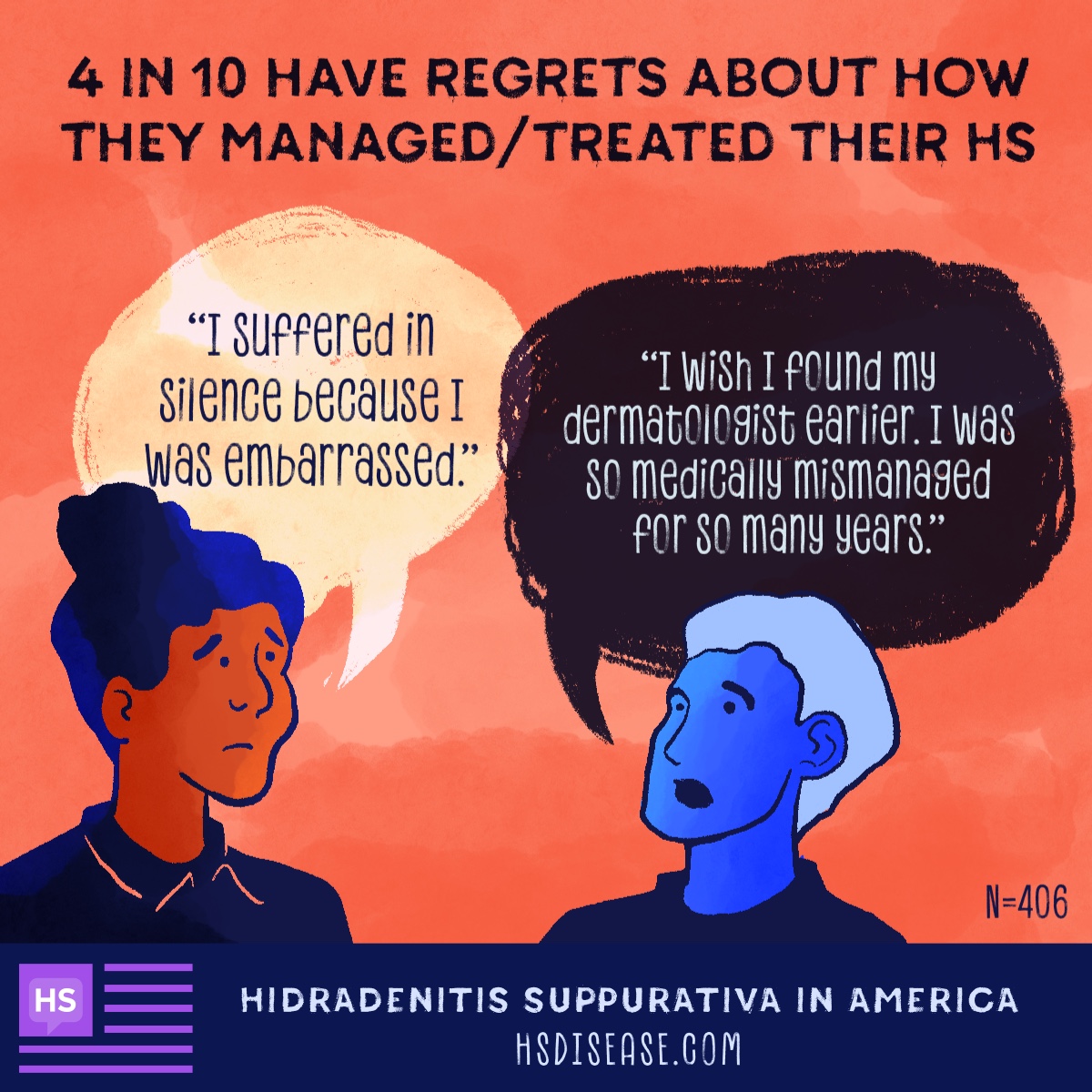The Skin I Am Stuck In: Results From the Hidradenitis Suppurativa In America Survey
From misdiagnosis and managing flares that show up overnight to the emotional toll of pain and isolation, it is normal to feel overwhelmed by the challenges of life with HS.
We asked more than 400 people living with HS to share what life is really like in our Hidradenitis Suppurativa In America survey. The results paint a picture of unspoken pain. The survey gives us insight into the emotional reality of living with an incurable chronic condition with few treatment options. Many people expressed that HS is misunderstood by both the medical community and close friends and family.
HS symptoms affect the whole body
The unbearable pain caused by HS can be chronic or episodic. Six out of 10 survey respondents report that their pain affects their quality of life. Flares occur in the body's most sensitive areas, like under the armpit, in the groin or buttocks, or under the breasts. While sometimes flares are caused by specific triggers, it is also common for flares to happen without any real cause. On average, respondents report about 5 areas of their body are affected by flares. This means most respondents are battling HS from head to toe, often in silence.
Misdiagnosis is all too common
It takes many HS warriors months or even years to get a diagnosis. Many wrote that the lack awareness of HS led to misdiagnoses, botched surgeries, and trying medicines and treatments that provided no relief. Seeing a dermatologist is the gold standard. The respondents who see a dermatologist rated their dermatologist's interpersonal skills higher. These people reported that their dermatologists are better at explaining treatment options than their primary care physicians are. But access is a challenge, with 28 percent of respondents saying they do not see any doctors for their HS.
Treatment regrets
Many community members wish they had gone to a doctor sooner instead of trying to fix their flares alone. Having access to treatment when their flares started could have prevented scarring and unneeded surgeries. These respondents had treatment regrets.
Members of the HS community rely on each other to exchange treatment information and experiences. It is common for those with HS to try multiple products before finding one that works. On average, respondents have tried more than 4 topical products for their HS. Only 11 percent of respondents feel their HS is controlled with their current treatment plans.
Myths are harmful
As if a diagnosis of HS was not enough, many of our HS warriors say people make assumptions about their condition and their bodies. Many wish others knew about the emotional impact and intense pain of flares.
Nearly half of the respondents have had others mistake their HS symptoms for poor hygiene. Having HS has nothing to do with being unclean, and HS is not contagious. HS is not caused by being overweight, and there is nothing people with HS did to get this condition. HS warriors want you to know they are not lazy. Their bodies are constantly fighting, and they are almost always in pain.
Beneath the surface
HS can scar more than just our physical bodies. It can have a huge impact on our emotional well-being and mental health. In addition to HS, 58 percent of those surveyed were diagnosed with anxiety or panic disorders. Fifty-five percent have depression. A pattern of painful boils, inflammation, and stress can be hard to break. The more we flare, the more we stress – and the pattern continues.
Because of the areas of the body that are affected and the stigma, talking about HS can be hard. Each person who shares what they have gone through helps us to better understand HS. You can help others to feel less alone.
The Hidradenitis Suppurativa In America survey was conducted online from September through November of 2020. The survey was completed by 406 people diagnosed with hidradenitis suppurativa.






Join the conversation